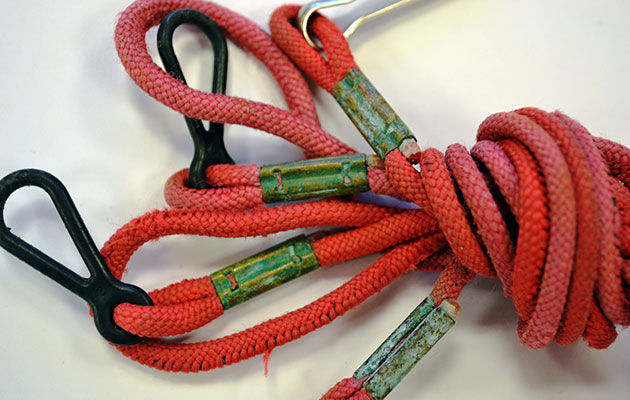RYA survey reveals that one outboard kill cord in three, designed to stop the engine if you fall overboard, would not work if used in an emergency
An RYA survey has found that as many as one third of outboard engine users have experienced the failure of the killcord, kill switch, or both. This means that if they fell into the water while operating an outboard, the engine would not stop and could put them at risk of serious injury.

During the summer of 2015, the RYA undertook a survey to investigate the causes of kill cord and kill switch failure. 1016 people responded from 23 countries including the Falkland Islands, the USA, the Philippines and Australia, although 90 per cent of respondents were from the UK.

The majority of respondents stated that they had never experienced a kill cord or kill switch failure. A third, however, described experiencing a failure of either the kill cord, kill switch or both, with problems occurring on all engine sizes (sub-4hp to 150hp plus) and with 73 per cent of problems reportedly occurring in engines aged 2-10 years.
The survey revealed:
- Over 65 per cent of respondents kept the kill cord ashore or in a locker on the boat, but 30 per cent left the kill cord attached to the kill switch when not in use, potentially exposing components to UV and salt degradation or fatiguing the kill switch spring mechanism.
- Over half of respondents got their engines serviced by the local service dealer for the engine, while just under 75 per cent of engine users were undertaking periodic maintenance checks. However, there were a handful of Powerboat Instructors, safety boat crew and recreational powerboaters who were either undertaking no checks, or were unsure whether any were being done.

The reasons given for kill cord failure point to the need for closer inspections being carried out before usage to identify weakening of this vital piece of equipment:
- Kill cord came apart because of rusty metal components
- Kill cord snapped with no inner cord
- Kill cord lost elasticity and stretched, so difficult to keep on leg without it dropping to the floor and falling off or activating the kill switch every time the helm moves their feet
- Kill cord outer perished and left inner core exposed

There were also problems with non OEM (Original equipment manufacturer) kill cords, which are often easily available and cheaper than OEM kill cords. Problems associated with these were that the attachment jammed in the switch as it was too tight fitting, or that they were too loose in the switch mechanism and therefore did not reliably pull the mechanism apart enough to activate it.
A further area where failures occurred were through operator error:
- Kill cord was not properly attached
- Kill cord slipped off the wrist or continually pulled out of the kill switch when worn around the wrist and pull-starting
- Expecting the kill cord to disconnect by walking around the side of the console (this would cause too much friction and the kill cord may not disconnect).
The survey also found that 66 per cent of kill switch failures failed with the engine not stopping, while the remaining third of failures meant that the engine would not start. While 12 per cent of respondents noted that they were attempting to stop the engine when the kill switch failed, it is unclear whether they were testing the kill cord or whether they genuinely needed to stop the engine.
Rachel Andrews, RYA Chief Instructor, Motor Cruising and Power said:
‘The aim of the survey was to analyse the failures identified and see if there was any commonality of cause. It has long been in the RYA Powerboat Level 2 syllabus to test the kill cord before setting off, and it is great to see that not only is this practice embedded, but that it is picking up issues early before an emergency situation occurs.
The results of the survey show that the good practice of testing a kill cord before setting off is fairly widespread. However, it also showed that there are areas for improvement in maintaining equipment, such as checking kill cords for signs of fatigue, discolouration, stiffening, loss of elasticity and any metal or plastic clips; and checking the actual kill switch.’




